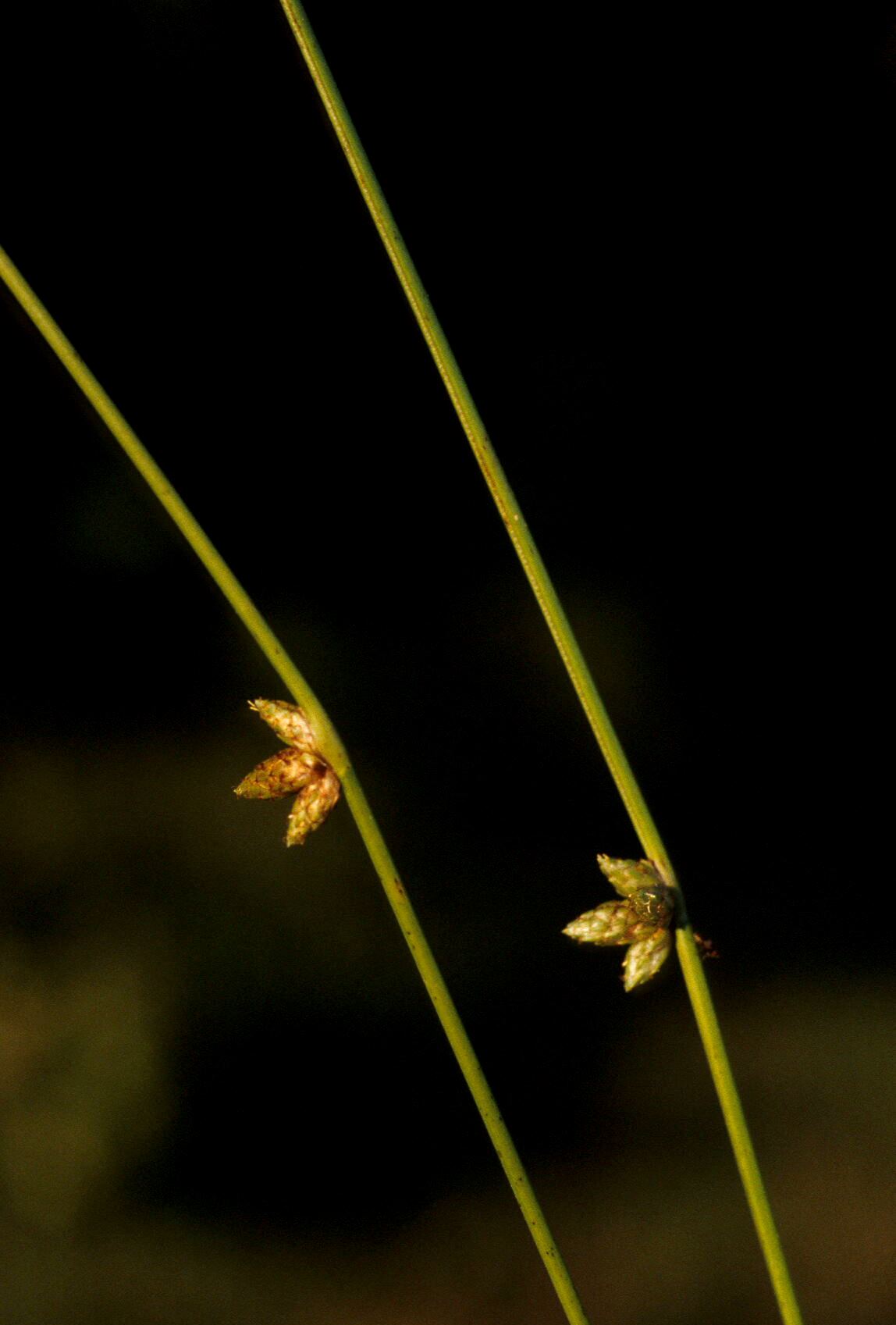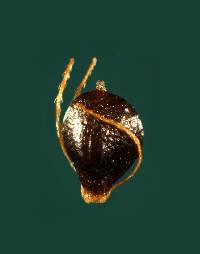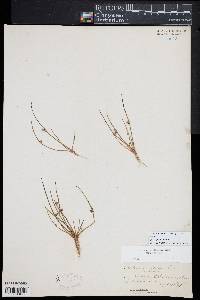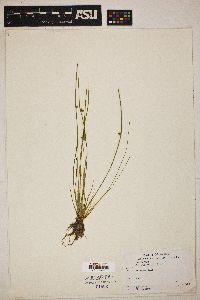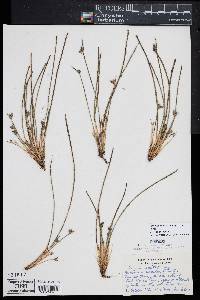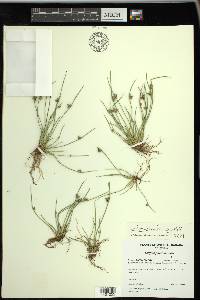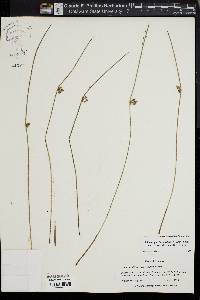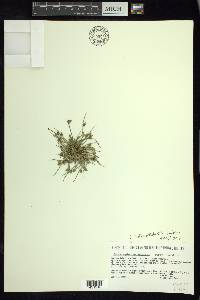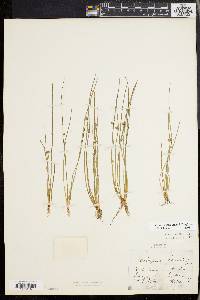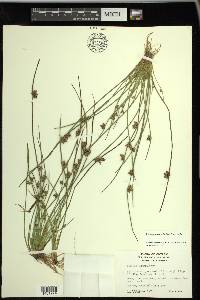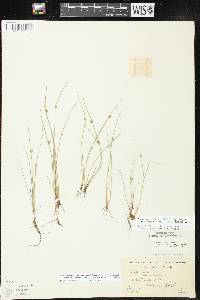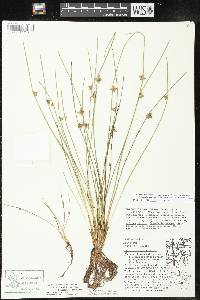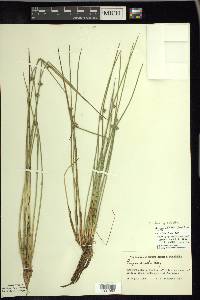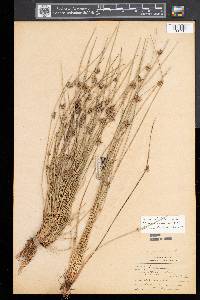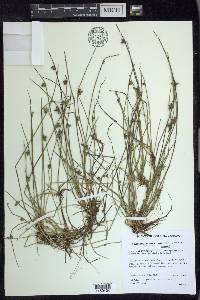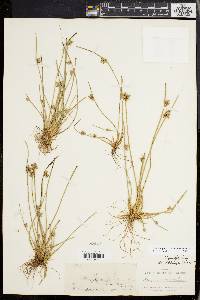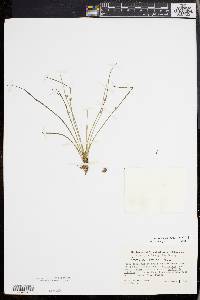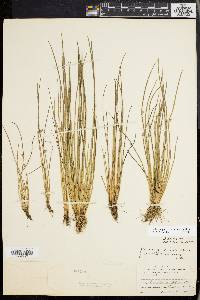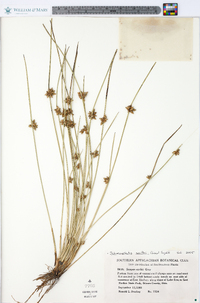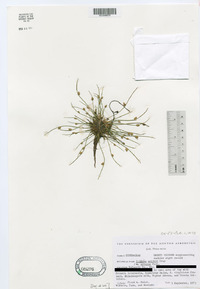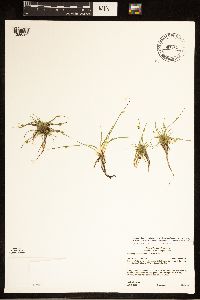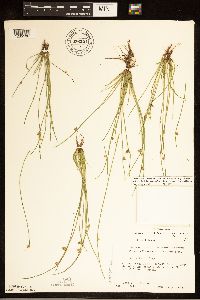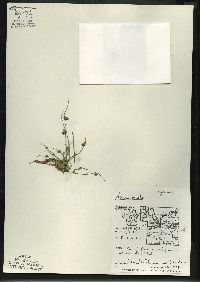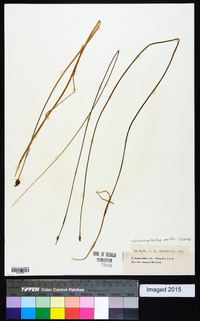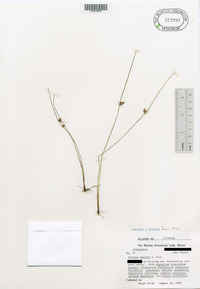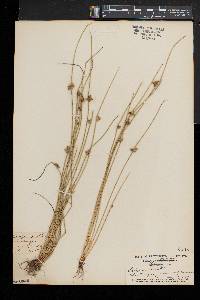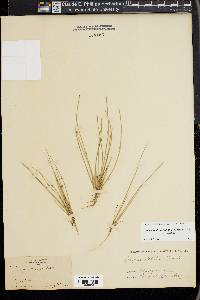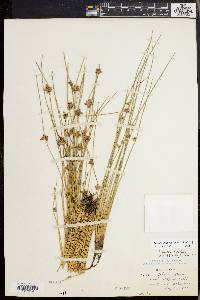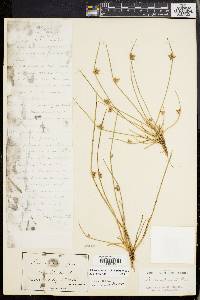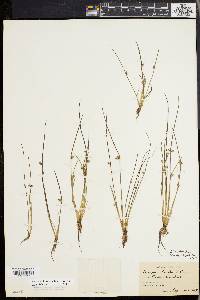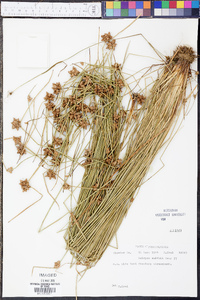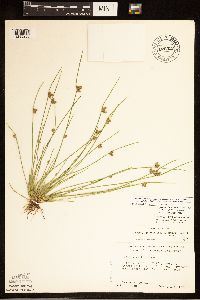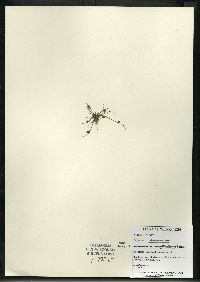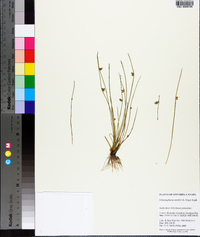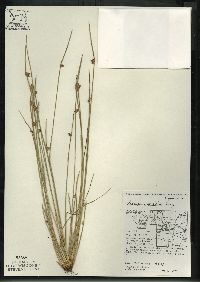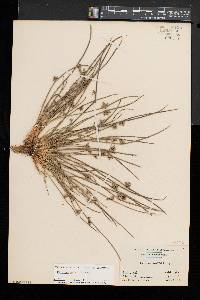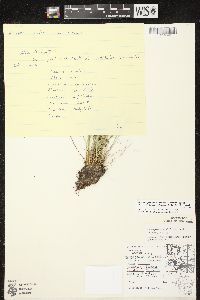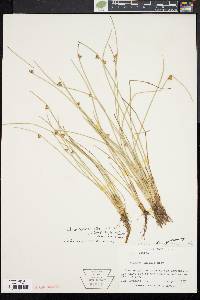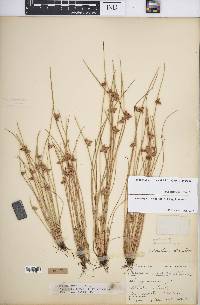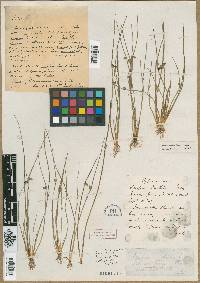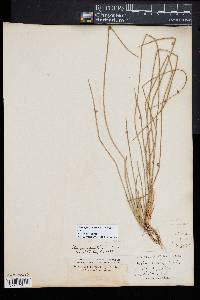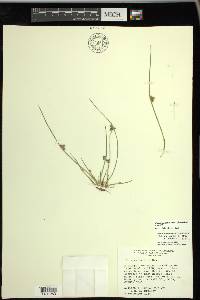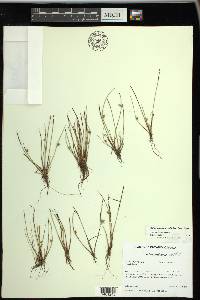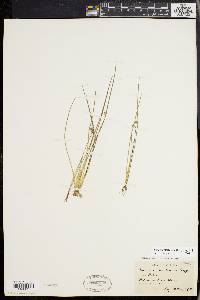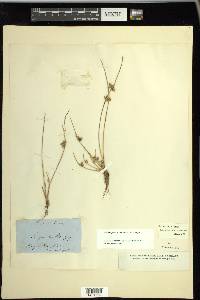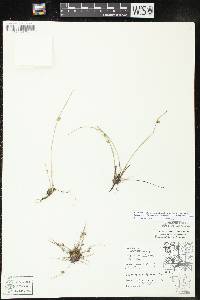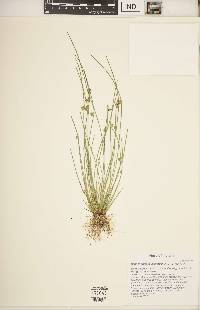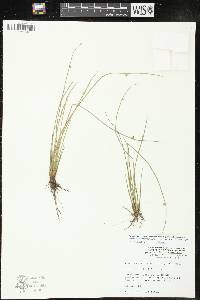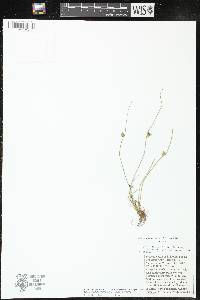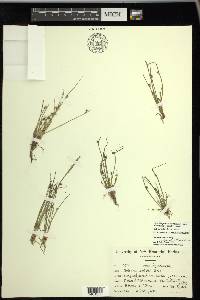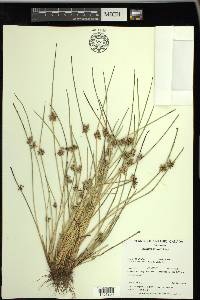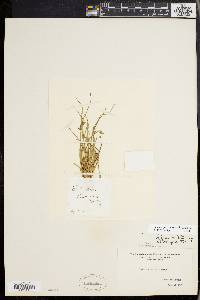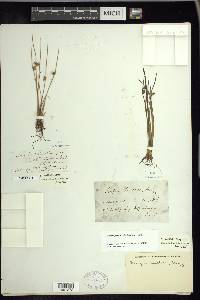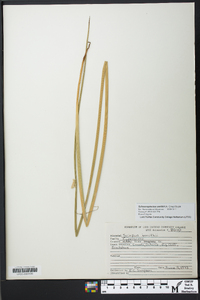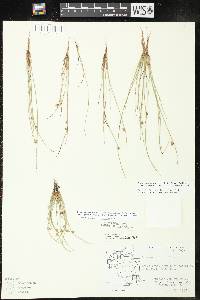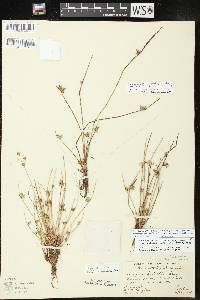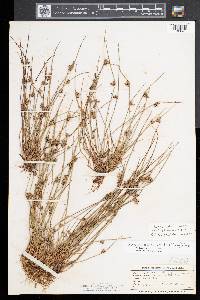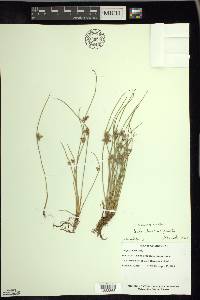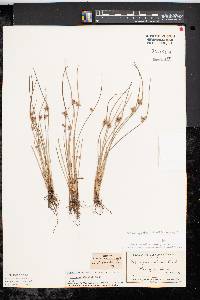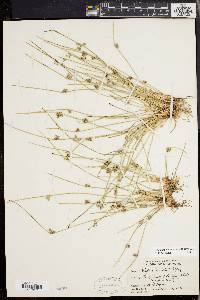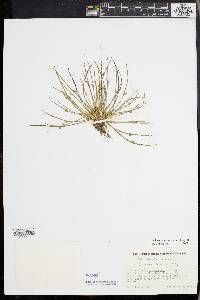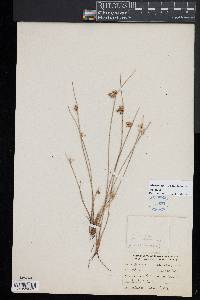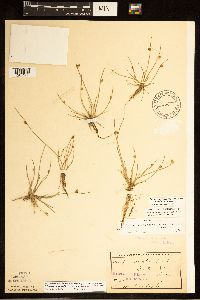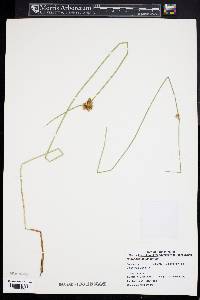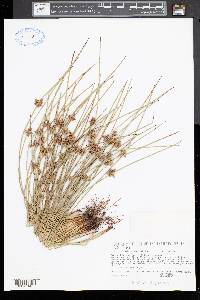
|
|
|
|
Family: Cyperaceae
Smith’s Bulrush
[Schoenoplectus smithii (A. Gray) Soják, moreSchoenoplectus smithii subsp. williamsii (Fernald) Soják, Schoenoplectus smithii var. levisetus , Schoenoplectus smithii var. setosus , Schoenoplectus smithii var. smithii , Scirpus smithii A. Gray, Scirpus smithii var. levisetus Fassett, Scirpus smithii var. setosus Fernald, Scirpus smithii var. williamsii (Fernald) T. Beetle] |
Annual herb with 1 mm wide rhizomes, tufted 2 cm - 0.5 m tall Leaves: one, to as long as culm. Sheath fronts not bearing pinnate fibers. Ligules membranous. Blade zero or one, tiny or longer than sheath by 0.5 mm, 0.5 - 1 mm wide, C-shaped in cross-section, parallel-veined. Inflorescence: composed of one to fifteen spikelets, terminal, subtended by bracts. Lowest bract leaf-like, upright or diverging, 0.5 - 15 cm long, nearly circular in cross-section and channeled. Flowers: minute, subtended by a floral scale, lacking sepals and petals, bearing zero or four to six bristles (rarely one to three). Bristles brown, slender, equal to or to two times longer than achene, distinctly wider basally, strap-like, bearing small spines. Stamens three, exserted. Anthers about 0.5 mm long. Pistil one. Style linear, two-cleft or both two- and three-cleft. Fruit: a one-seeded achene, brown, becoming darker, 1.5 - 2 mm long (including beak), 1 - 1.5 mm wide, wedge-shaped to reverse egg-shaped with a tapering base, beaked, flat on one side and convex on the other or unequally biconvex, sometimes three-sided, finely longitudinally ridged at 20X to 30X. Culm: decumbent to arching, 2 cm - 0.5 m long, 0.5 - 1.5 mm wide, circular in cross-section, solid, internally spongy with air cavities. Spikelets: solitary or in clusters, 5 - 12 mm long, 3 - 4 mm wide, circular in cross-section, with eight or more floral scales. Floral scales spirally arranged, orangish brown to straw-colored with a greenish midrib and tiny lines or spots, 2.5 - 3 mm long, 1.5 - 2 mm wide, reverse egg-shaped with a rounded apex bearing a tiny point, minutely hairy-fringed towards the apex (at 20X). The lower scales of the spikelet often bear two to ten distinct ribs along their flanks. Similar species: No information at this time. Flowering: late July to early September Habitat and ecology: Local in bogs, floating peat mats, and peaty muck flats. Occurence in the Chicago region: native Etymology: Schoenoplectus comes from the Greek words schoinos, meaning rush or reed, and plectos, meaning twisted, plaited, or woven, referring to the use of the culms for making useful objects. Smithii is named after Charles Eastwick Smith (1820-1900), the English botanist who discovered this species. Author: The Morton Arboretum Annual herb with 1 mm wide rhizomes, tufted 2 cm - 0.5 m tall Leaves: one, to as long as culm. Sheath fronts not bearing pinnate fibers. Ligules membranous. Blade zero or one, tiny or longer than sheath by 0.5 mm, 0.5 - 1 mm wide, C-shaped in cross-section, parallel-veined. Inflorescence: composed of one to fifteen spikelets, terminal, subtended by bracts. Lowest bract leaf-like, upright or diverging, 0.5 - 15 cm long, nearly circular in cross-section and channeled. Flowers: minute, subtended by a floral scale, lacking sepals and petals, bearing four to six bristles (rarely one to three). Bristles brown, slender, equal to or to two times longer than achene, distinctly wider basally, strap-like, bearing many small spines. Stamens three, exserted. Anthers about 0.5 mm long. Pistil one. Style linear, two-cleft or both two- and three-cleft. Fruit: a one-seeded achene, brown, becoming darker, 1.5 - 2 mm long (including beak), 1 - 1.5 mm wide, wedge-shaped to reverse egg-shaped with a tapering base, beaked, flat on one side and convex on the other or unequally biconvex, sometimes three-sided, finely longitudinally ridged at 20X to 30X. Culm: decumbent to arching, 2 cm - 0.5 m long, 0.5 - 1.5 mm wide, circular in cross-section, solid, internally spongy with air cavities. Spikelets: solitary or in clusters, 5 - 12 mm long, 3 - 4 mm wide, circular in cross-section, with eight or more floral scales. Floral scales spirally arranged, orangish brown to straw-colored with a greenish midrib and tiny lines or spots, 2.5 - 3 mm long, 1.5 - 2 mm wide, reverse egg-shaped with a rounded apex bearing a tiny point, minutely hairy-fringed towards the apex (at 20X). The lower scales of the spikelet often bear two to ten distinct ribs along their flanks. Similar species: No information at this time. Habitat and ecology: Wet areas. Occurence in the Chicago region: native Etymology: Schoenoplectus comes from the Greek words schoinos, meaning rush or reed, and plectos, meaning twisted, plaited, or woven, referring to the use of the culms for making useful objects. Smithii is named after Charles Eastwick Smith (1820-1900), the English botanist who discovered this species. Setosus means bristly. Author: The Morton Arboretum Tufted annual; stems to 6 dm, terete or obtusely trigonous; lf-sheaths variously bladeless or with a short, slender blade; bract 2-10 cm, ±erect, like a continuation of the culm; spikelets 1-several, capitately aggregated, ovoid, 5-10 mm, at least the larger ones with mostly 15-30 fls; scales obovate, broadly acute to obtuse and mucronate; style bifid; achene glossy, brown to nearly black, broadly obovate, 1.3-1.9 mm, lenticular or planoconvex; bristles barbed or smooth, well developed and surpassing the achene, or ±reduced or obsolete; 2n=38, 40. Wet shores, often in the intertidal zone of estuaries, but also along inland lakes; Que. to Minn., s. to Ga. and w. Tenn. Fr July- Sept. (Schoenoplectus s.) Fluctuating water-levels may favor plants with smooth or no bristles. Some authors segregate S. purshianus Fernald (S. debilis, a preoccupied name) on the basis of its unequally biconvex, rounded-obovate, more or less pitted achenes 1.75-2 mm, stouter bristles, scales with a distinct midvein, lacking a green central strip, and 2n=38 chromosomes, as opposed to S. smithii proper, with planoconvex, somewhat cuneate-obovate and subtruncate, smooth achenes 1.5-1.8 mm, more delicate and slender bristles, scales with a broad green midstrip and very obscure midvein, and 2n=40 chromosomes. The correlations are imperfect, and identification is often difficult. Gleason, Henry A. & Cronquist, Arthur J. 1991. Manual of vascular plants of northeastern United States and adjacent Canada. lxxv + 910 pp. ©The New York Botanical Garden. All rights reserved. Used by permission. From Flora of Indiana (1940) by Charles C. Deam On the wet, sandy borders of lakes and sloughs. [Variety setosus has bristles present around the achene. It is] found in habitats similar to those in which the species [Schoenoplectus smithii] is found. [Schoenoplectus smithii] is difficult to separate from Scirpus debilis [=Schoenoplectus purshianus]. In fact, they are united in Britton and Brown, Illustrated Flora, ed. 2. The shape of the stem seems to be the only constant character. The divaricating bract of Scirpus debilis is very characteristic but it seems that all plants do not have a divaricating bract. The shape of the achene can not be relied upon since on the same plant one can find plano-convex as well as biconvex achenes. …… Indiana Coefficient of Conservatism: C = 5 Wetland Indicator Status: OBL |

